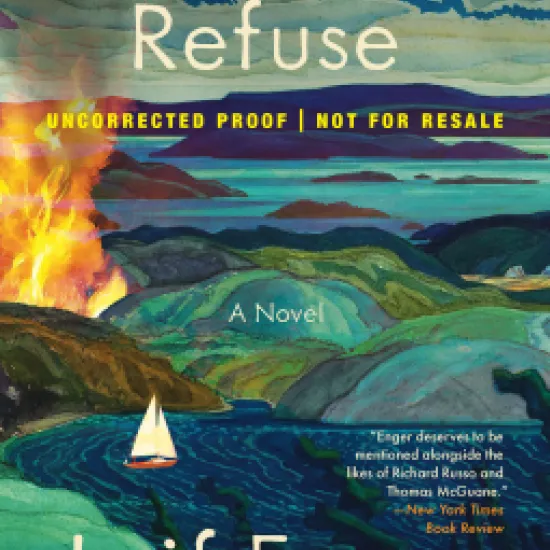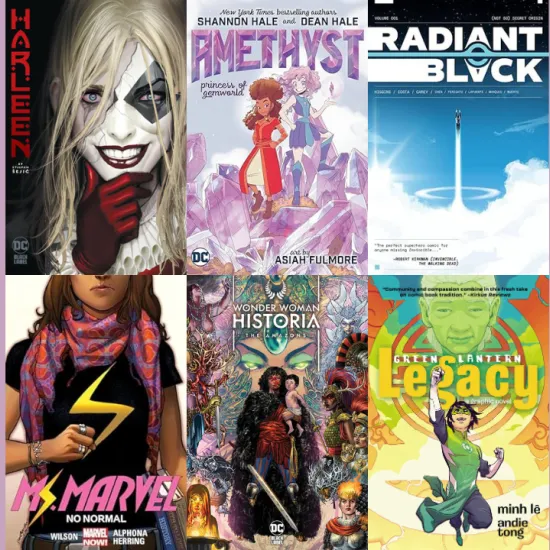- Margaret D.
- Wednesday, October 18, 2023
To mark the 30th anniversary of the opening of the beautiful Main Library at 1431 Assembly Street, I decided to take a look back at the history of Richland Library. The locations and buildings have changed over the years, but our commitment to serving the readers, artists, thinkers, builders, and creators of Richland County has remained the same.
The Beginnings (1895-1904)
If we go all the way back to the beginning of what is now the Richland Library, we start with the Lend-A-Hand Club. This Club was formed in Columbia around 1895 by men and women involved with the Union for Practical Progress, a progressive group aimed at the betterment of society. The Lend-A-Hand Club was formed with the goal to provide free reading material to the city’s poor. Donated reading material was sent to Columbia from UPP societies in Boston and other points north, and it was also collected from local people interested in, well, lending a hand. At first, these reading materials were stored and handed out at the Faith Mission, located at 1325 Assembly Street. Humble beginnings. Soon however, a more permanent space was secured in the City Hall in a room below the Opera House. Martha Cramer, the wife of Opera House manager Eugene Cramer, was the first librarian. The City Hall and Opera House was located on the northwest corner of Main and Washington Streets.
While the Lend-A-Hand Library was chugging along in City Hall, another effort to start a circulating public library was begun by Mrs. Cramer and others. This was to be the Columbia Public Library, and for a fee of 5 cents a subscriber could join the library and borrow books. The Columbia Public Library set up rooms in the Kendall Building, located on the southeast corner of Main and Washington Streets. Miss Ellen S. Elmore was the first librarian. Soon after, the Columbia Public Library moved to new space above the Stewart and Prentiss Hardware Store at 1530 Main Street.
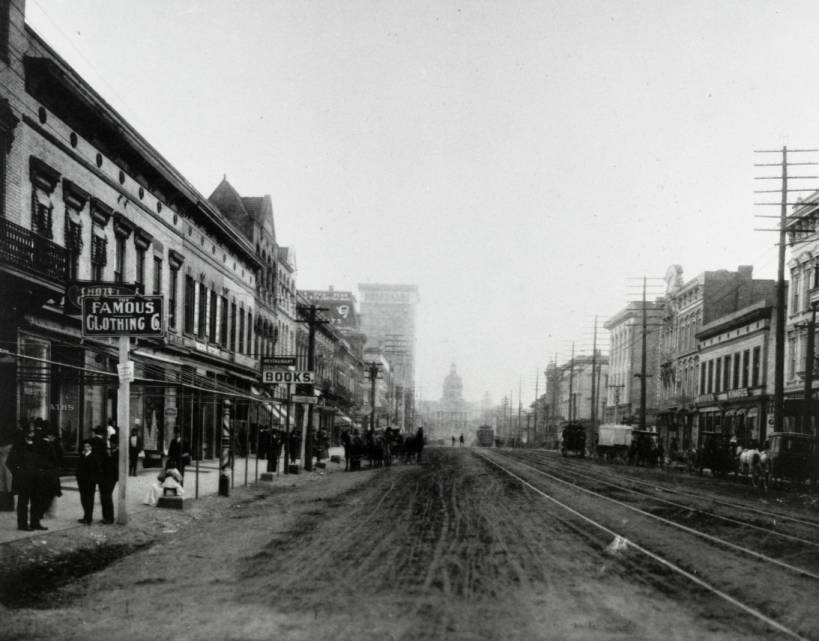
In March of 1899, at a joint meeting of the Board of the Lend-A-Hand Library and the Columbia Library Association who operated the Columbia Public Library, it was decided to merge the two libraries into one and to appoint Mrs. Martha Cramer as head of the new Union library. However, just a few days later a fire broke out at City Hall, destroying the building and the Lend-A-Hand Library. Nonetheless, Mrs. Cramer took up her post in the Columbia Public Library at 1530 Main Street and immediately began soliciting donations to restore the Lend-A-Hand collection, which now operated as a department within the Columbia Public Library. From the ashes an enlarged collection grew and more users were now served through the library. The library needed a larger space. In August, 1899 it moved to a room over Stanley’s China Shop at 1421 Main Street, and in 1900 the library moved again to rooms over Duffie’s Book Store at 1544 Main Street.
Still expanding, in 1901 the Columbia Public Library moved yet again to space in the new City Hall, now located on the corner of Main Street and Gervais Street. There it would remain for a few years, until the city’s first “skyscraper” was completed, and rooms were secured in the National Loan & Exchange Bank Building (now known as the Barringer Building). The Columbia Public Library would stay at that location for the next 19 years, finally offering Mrs. Cramer a rest in packing and moving.
Timrod Library (1905-1927)
In 1905, an oil painting of South Carolina poet Henry Timrod was gifted to the Columbia Public Library with the stipulation that the library be renamed in his honor. The portrait was accepted, and the library was known as the Timrod Library for the next 19 years. Mrs. Cramer continued in her service as librarian and the collection grew in popularity and scope. In 1922, the much-loved Mrs. Cramer retired from service and was replaced by Annie Locke, a trained librarian from Birmingham. Miss Locke noticed the library was straining at the seams and needed again to move to larger quarters. Other changes were also in store.
In 1924, the City of Columbia took a greater interest in guiding and funding the library. With financial support from the City and the Chamber of Commerce, the subscription fees were done away with and the library could now serve more people, regardless of means. This same year, the library moved into rooms on the second floor of the Sylvan Building as they searched for ways to afford larger quarters or a stand-alone library building like the Carnegie libraries in other cities. But they had to wait a bit longer for that dream to come true.
In 1926, the library moved again to rooms above Kramer’s Shoe Store at 1526 Main Street.
Growth and Stability (1928-1949)
In 1928, Annie Locke stepped aside as head librarian and Miss Lucy Hampton, later Mrs. Lucy Bostick, took the post as leader of the Columbia Public Library. She remained in that post for the next 40 years. This same year the City of Columbia received a windfall in insurance money after the Broad River bridge burned. They chose to use this money to invest in library services for residents by adding staff, books, and deposit libraries to the system.
In 1929, the Columbia Public Library moved into rooms in the Dr. James Woodrow home, a large brick mansion at 1400 Sumter Street. Dr. Woodrow, who died in 1907, had installed a large personal library and publishing concern in his home and portions of these rooms were refitted to house the library. The home also continued to be occupied by his daughter, Marion Woodrow. The library would be located at 1400 Sumter Street for the next 50 years.
In 1930 the library added a branch in Eastover and several deposit libraries were run in local schools over the summer. Also, funding provided by the Rosenwald Foundation was accepted on the condition that library services be made available to African Americans, who had thus far been excluded from using the library. Richland County administered these funds and opened a branch library for Black readers in the Phyllis Wheatley YWCA located on the southwest corner of Park Street and Hampton Street. A book truck was also acquired with these funds.
In 1933 Richland County took over management of the library and its funding, and in 1934 the Richland County Public Library was formerly established with a new Board of Trustees, though the people on the Columbia Public Library Board of Trustees really just moved on over and took up the same position on the new Board. But there was a new goal to expand library services and to reach readers in urban and rural areas of the County.
In 1936, the elderly Marion Woodrow moved from her home at 1400 Sumter Street to reside with family in Florida. The Richland County Public Library was granted use of the entire home, and renovations and expansion into the building helped ease the strain for more space. Also, that year the library acquired an abandoned church in the Waverly neighborhood and opened a new branch for African Americans in that former church building. The library in the Phyllis Wheatley YWCA was moved to the Waverly Branch Library, which operated at 2314 Gervais Street until 1971.
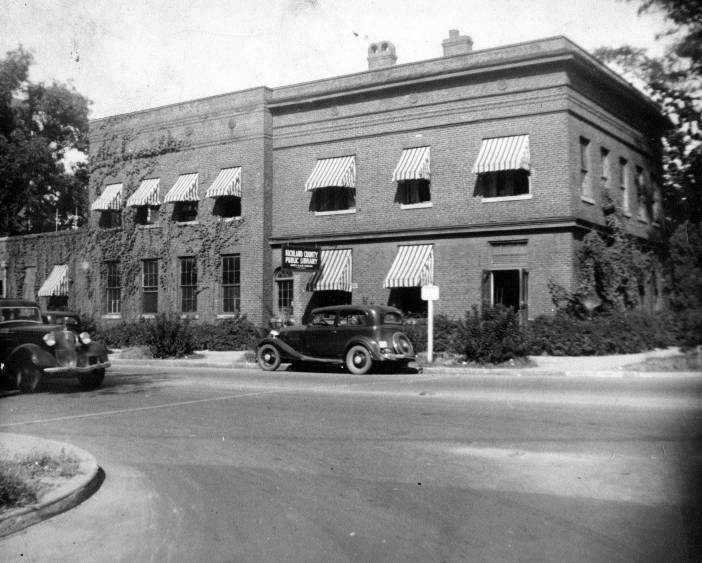
In 1939 the library purchased the Woodrow home from Marion Woodrow’s estate and, for the first time, owned the structure and property outright. This gave the Board the assurance that they could finally design a new, larger library building and place it on the library’s property. The architectural firm LaFaye & Lafaye drew up plans for a neoclassic library structure and, in 1940, a bond was issued to pay for the new library. But World War II got in the way and construction was put on hold for another decade.
Post-War Era (1950-1989)
After the war, the bond originally granted to the library to fund construction of a new building was diminished in value due to the post-war inflation boom. LaFaye, Fair & LaFaye, the now expanded architectural firm, drew up a new design that was smaller and more modern in style than the original concept. In 1950, construction of a neat and tidy mid-century modern box of a building was finally begun on the site at 1400 Sumter Street.
During the construction, the library moved temporarily into the former Wingfield home, located at 1428 Senate Street. Ironically, this is now the location of the modern South Carolina State Library. The sleek new Main Library opened at 1400 Sumter Street in 1952. To pay homage to the family that generously housed the library for so many years, coral vine from the Woodrow yard was retained and replanted around the entrance.
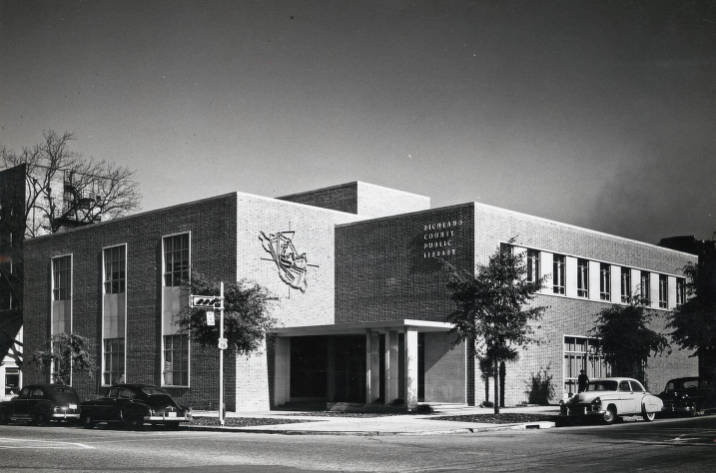
In these post-war years suburban communities expanded and the desire grew to have branch libraries in these surrounding neighborhoods. Donations and grass-roots fundraising help to expand the Richland Library Public Library into these suburban areas. In 1961, the Cooper family donated land and building funds to construct the John Hughes Cooper Branch in Forest Acres, and in 1968 the St. Andrews Women’s Club raised enough funds to purchase a building and books for a new branch library in St. Andrews.
In 1968 our long-serving leader Lucy Bostick was killed in an automobile accident. Children’s librarian Anna Davis King took the interim role as library director, then was appointed the permanent director the following year. During Mrs. King’s tenure the library added several branch locations including the Devine Street Branch (1972-1992), Latimer Manor Branch (1972-1975), Landmark Square Branch (1975-1992), and the Northway Plaza Branch (1976-1992).
In 1979, Anna King retired, and C. David Warren became the new director of the Richland County Public Library. Mr. Warren was keenly interested in expanding the library’s physical spaces and increasing the number of books in the collection. Technological improvements also soon increased the library’s efficiency and research capabilities.
In 1985 the Eastover Branch library was completely reconstructed and the following year the new Northeast Regional Branch library was built. These new buildings showcased what a modern library could be, with computer catalog stations, tall steel shelving, natural lighting, outdoor book drops, and ample parking.
Modernization and Expansion (1990-present)
In 1989 the library received approval from Richland County to issue a bond referendum and the community supported a major expansion effort. On February 14, 1993, an impressive 242,000-square-foot Main Library at the corner of Assembly and Hampton Streets in downtown Columbia opened to the public. The modern Main Library, designed by architect Eugene Aubry, instantly became a city landmark. Within the year the John Hughes Cooper Branch and St. Andrews Branch libraries were replaced with new buildings, and five new locations were added to the system which were the Blythewood, North Main, Sandhills, Southeast Regional and Wheatley branches.
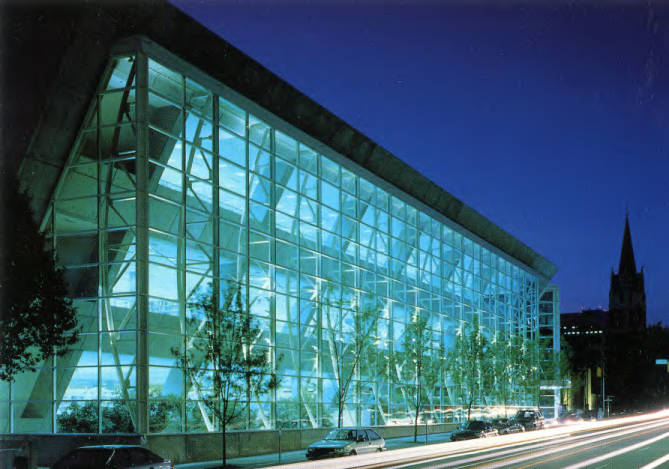
The new and improved Richland County Public Library system was well loved and well-used, and awards and accolades followed. In 2007, a new location was added in Ballentine, giving the system 11 library locations in total.
In 2009, Mr. Warren retired, and Melanie Huggins became the library’s new executive director. In 2012, the library’s name was shorted to Richland Library and there was a renewed focus to reimagine our library’s services, and to expand the library system again and update the aging locations.
In 2013 the Eastover Library was replaced with a new building and funding was obtained to renovate or reconstruct all other locations. By 2017, all buildings had been completely redesigned and Sandhills and Ballentine libraries were moved to new locations with new buildings. Unique spaces for meetings, creative projects, new collections, new technologies, and outdoor plazas were incorporated into all locations, new and old.
In 2018, Richland Library opened a new library in Edgewood and another the following year in Lower Richland, making these the 12th and 13th locations in the system.
Today, it’s hard to imagine that from a small stack of free reading materials in the Faith Mission has grown an expansive library system with 13 modern locations and a wealth of materials, resources, and creative events that serve to enhance our community and inspire joy and learning in all who connect with Richland Library. Who knows what’s next, but we hope you come along for the ride!

